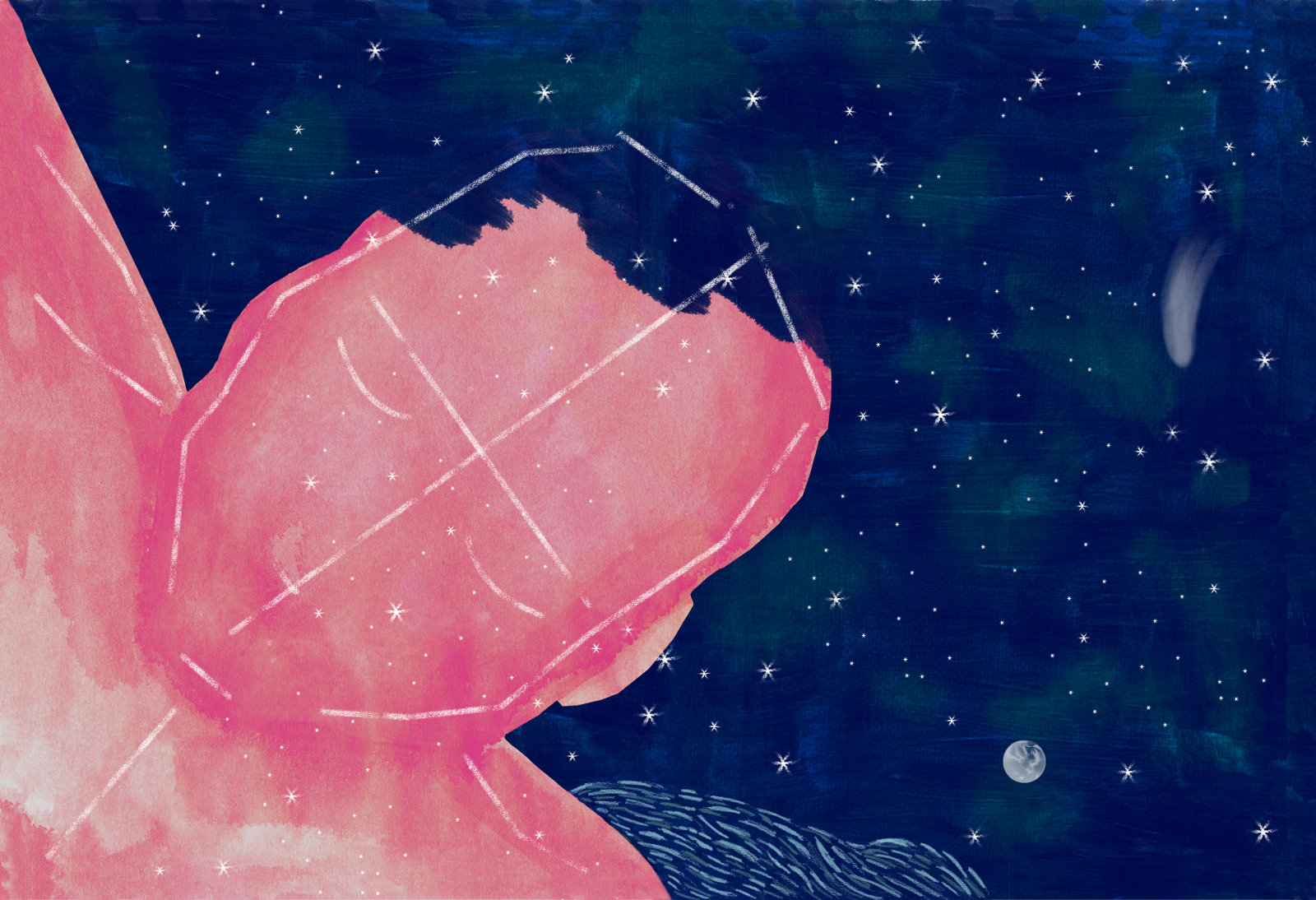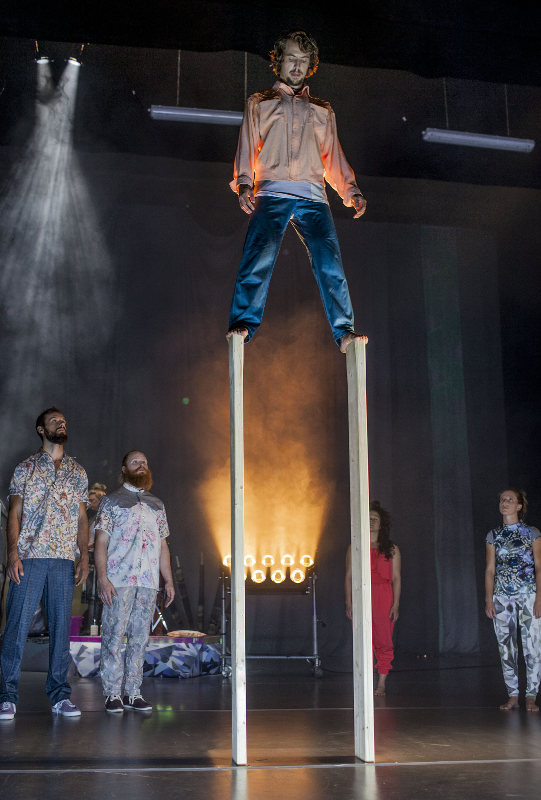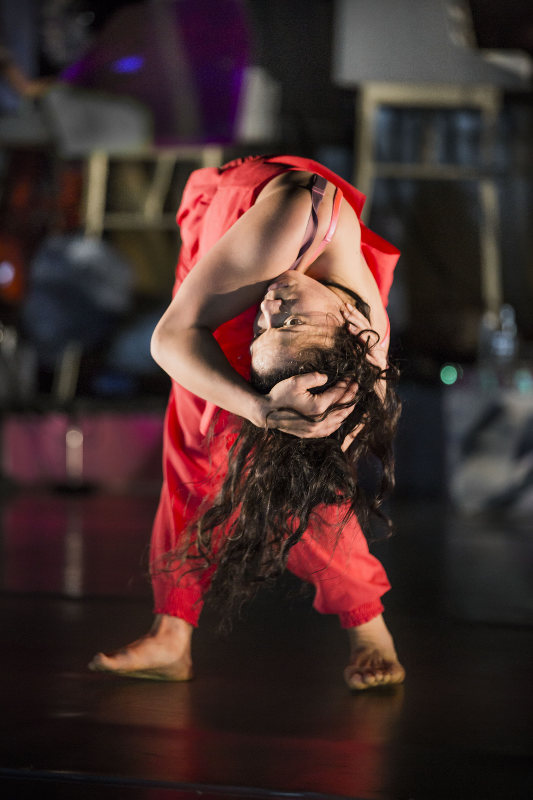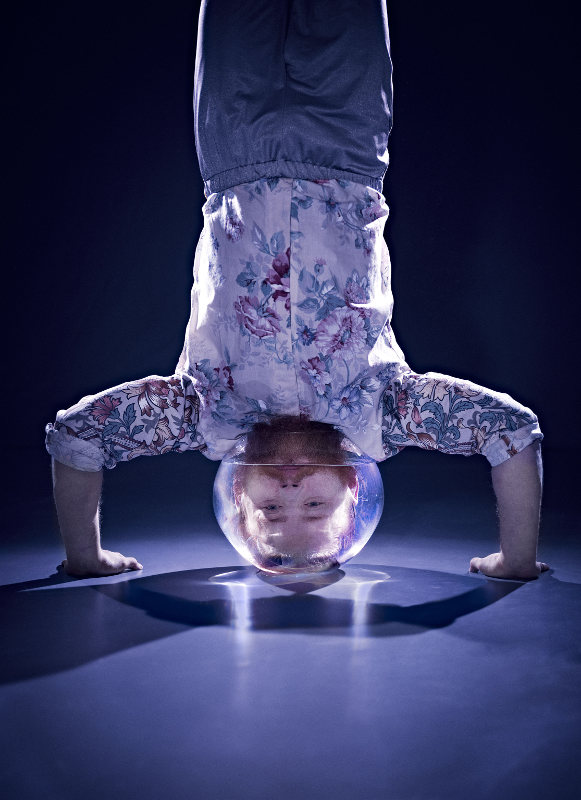
Illustration: Sepidar Hosseini
Not Bored Exactly
Part of a head, a nebula with its eyes closed, is being wiped away at the edge of space. Just a slice at the top: the pink wash being swept at by the black, chalked gigantic eyes closed gently beneath. Over the page a limb won't fit into view; only the foot and green/black calf are visible, in places stained by water and trailed by lights. Later, fluorescent powdery stars appear, mysterious chalk matrices, creatures cut from polygons of clear ice, flowing sourceless rivers—illustrated by Sepidar Hosseini, Underart's programme is like a little universe or book of dreams. Body, river, body, blackness—the elements become less distinct as they're suspended in sea, sky and space. Each drawing looks equally readable right way up, upside down, or turned to either side, and accordingly the text pages, which detail Olle's experience of his crash and the creation of Underart, set Swedish and English across each other and ask the book to be rotated.
It is December 27th at the International Scene of Contemporary Dance in Stockholm. They stand watching but are not allowed to touch. It is so quiet you can hear a pin drop. I am lying there awake and for an instant I believe I am levitating. I can not feel my body. A brief moment later, I understand. It is the moment just after the landing and just before everything changes. Only minutes ago, I was jumping high up into the air, doing a triple somersault. I lost control and it turned into two-and-a-half rounds ending straight on my head. Within that second I heard my neck break. A moment devoid of time. The sound of the neck break echoed in my head, itself an endless, dark, spherical space in which I was hovering weightlessly.
The memories in the Underart programme may have been shaved down to a few icy seconds of direct recall, but the stage performance they inspire takes quite a different tack. While images of restriction, isolation and recovery are all obliquely there, Olle's story is not represented literally or sequentially, and directing the show his intention was to disperse the intensity of his experience into the detail of everyday life. 'I felt I had to talk about my history a bit, my crash landing, but I didn't want it to be obvious in the result. Instead it felt important to be saying something about boredom, and nothingness.'
"I felt for Underart that we had to explore the importance of nothingness—and I think it's hard to do nothing as a circus artist." (40s)
And so the pace of Underart is, sometimes, quite relaxed. The seven people on stage (five circus artists, two musicians) spend quite a lot of time watching each other, or just standing there letting the audience look them over. They move through some relaxed stretching, perform a sedate hula hoop routine (mostly just round and round), and put everything briefly on hold for Matias Salmenaho's swift coffee break. The circus moments that coalesce out of this atmosphere are not themselves so straightforward: they have the usual intensity of physical investment (Olle remembers doing teeterboard: 'Being in the focused state a circus stunt demands is among the most naked, unguarded things you can do in front of an audience'), but they've been mixed uncertainly with the memory of the accident, and, in a way, touched by its nothingness. They seem to occupy the same area. There's the circus act as a few seconds of execution that compacts and realises years of training, and there's the accident as a little twist of space that changes the course of a life—the implications of one unfolding backwards, the other forwards. The project of Underart seems to be to embrace both, but also to try to extend the energy of the big trick out a little, or to see what other kinds of action it might inhabit.
“I feel in one way that I don't know anything about directing or circus, but I've been doing it my whole life. And I know that I know circus, somehow. I define it as the thing that I know.”
Conversation Notes
Olle Strandberg is a director and artistic project leader with Cirkus Cirkör. Underart is the sequel to his first project with Cirkör, Undermän, and the second piece in a planned trilogy of works. Olle is also joint artistic director of the company Poetry in Motion (alongside Erik Linghede), under which he made the juggling / street dance performance Ballroom House.
Olle was interviewed 12 February 2015 in Subtopia's Tornet (Tower) during the seventh edition of Subcase. John Ellingsworth saw Underart at the festival Hautes Tensions on 8 & 9 April 2015. The artists in the piece were Christopher Schlunk, Andreas Tengblad, Methinee Wongtrakoon, Alexander Dam, Anna Ahnlund, Iris Pelz and Matias Salmenaho.
This interview was sponsored by Subtopia, with additional support from Hautes Tensions.
Background in Training
In the course of the interview we talked quite a bit about directing in circus — what skills or aptitudes it requires, whether the director leads or facilitates, the role of the director at different stages of the creation, and so on. Here Olle talks about the importance of having a training background when working with circus artists:
Circus Identity
Talking around Olle's accident I asked him whether he feels differently about his body now, and whether he's still training.
"I live like I'm about to start doing acrobatics again and juggling again." (1.54m)
Finally
Olle Strandberg dances to a slowed down rendition of Bille Jean.



